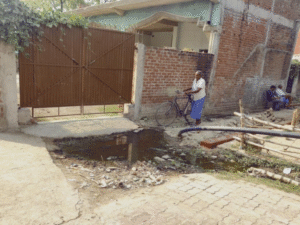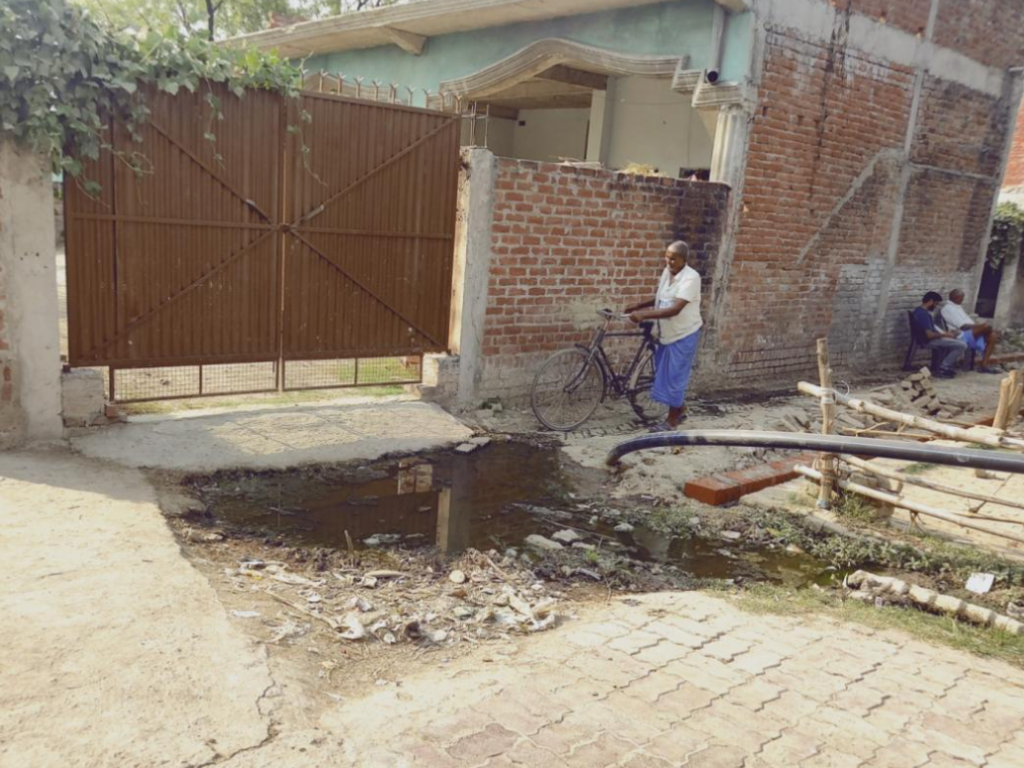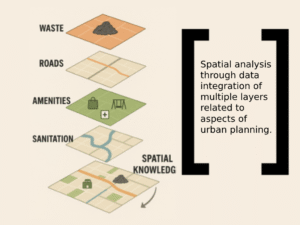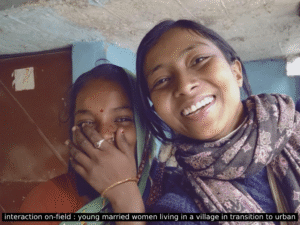As urban dwellers, we don’t encounter our cities as abstract zones, we live them. Silently and constantly, we experience both the conveniences and the discomforts our surroundings offer. We navigate them as residents, workers, and commuters, and depending on who we are and where we live, the “problem” shows up differently.

City in transition from rural to urban. Accessibility is hindered due to waterlogging, damaged roads, and broken drainage lines
For some, it begins with a typical morning: you’re running late, stuck in traffic, water from last night’s rain has pooled on the road, plastic chokes the drains, and the stink of uncollected waste sharpens the air. You instinctively hold your breath, and maybe your bladder too, because there’s no working toilet nearby. “Why is nothing working in this city?” you wonder.
For others, the problem is quieter but more persistent. The broken government hand-pump. The locked public toilet, built last year but never maintained. The garbage pile that grows at the edge of a lane because the waste truck doesn’t come this far. In tier-2 cities, where rural and urban meet in messy transition, these aren’t disruptions; they are a part of daily life.
A toilet gets built, but there’s no sewage system. A road is paved, but no drains are laid alongside. A mobile app is launched, but few citizens can access it. A housing scheme is planned, but the data is outdated or incomplete. Even when data is collected, it rarely loops back to the community it came from. These aren’t failures of intent, they are failures of continuity, of listening, of co-creation. Intentions do exist in policy rooms, CSOs, the private sector, and among local governments, but they often remain ungrounded in people’s lived realities.
Having moved between tier-1 and tier-2 cities over the past few years, I’ve felt this contrast. Tier-1 cities, for all their chaos, offer pockets of reliability; regular waste collection, functional public transport, and even limited citizen responsiveness. But they, too, are under growing pressure, not always adapting fast enough for rising populations. Meanwhile, tier-2 cities are still catching up, expanding rapidly without foundational systems in place. So here’s the question: Can tier-2 cities be planned now, not just to fix today’s issues, but to build resilient systems for tomorrow’s urban dwellers? The problem, I’ve come to realise, isn’t just weak infrastructure or lack of money. It’s fragmented development, projects arriving in silos, disconnected from one another and from the people they are meant to serve.
Through the U-CAN Fellowship with Shelter Associates, I’ve been exploring the intersection of infrastructure and usability, data and dignity, planning and people. This journey is about uncovering how the challenges we face are layered and hidden, how what we experience as failure in services, systems, or planning often stems from deeper, more complex root causes.


